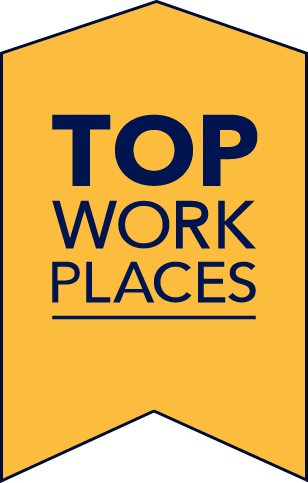Effective communication is vital for success in today’s fast-paced business world. It fosters collaboration, enhances productivity, and cultivates a positive work culture. Here we’ll provide practical tips and strategies to optimize workplace communication, helping you unleash its transformative power.
So let’s dive in and explore the importance of workplace communication and the ways you can connect, collaborate, and succeed.
The importance of workplace communication
Establishing clear communication and setting expectations helps team members to understand their roles in contributing to the organization’s success. With open and transparent communication channels, individuals understand how their efforts align with the company’s direction. This clarity minimizes confusion and duplication of work and fosters a sense of purpose and direction among team members.
Effective workplace communication ensures everyone is on the same page, promoting collaboration, synergy, and a shared commitment to achieving organizational milestones. It enables teams to adapt swiftly to changes, overcome challenges, and seize opportunities, ultimately driving the growth and prosperity of the entire organization.
Learn more: Building Effective Teams
How to improve communication in your organization
A few years ago, Gallup found that only one-fifth of employees thought their company had open communication. Especially with remote and hybrid work, it’s essential to set the right tone. Below, we highlight how to improve workplace communication.
1. Use meetings effectively
Effective meetings are one of the ways to improve communication in the workplace. Regular, recurring meetings allow individuals and teams to connect and collaborate.
Experiment with different meeting formats and note what works best. Drafting agendas ahead of time, setting time limits, and connecting all communication to the company mission helps leaders use employee time in the most effective way possible.
Creating more effective meeting guidelines and creative ways of using technology can prevent work-from-home burnout by making employees feel more aligned with and motivated by the company’s vision. Remote meetings create new communication challenges, so consider ways to avoid these.
2. Set clear expectations
Establishing clear expectations is one of the ways to improve workplace communication. It encourages higher levels of engagement, reduces team confusion, and prevents issues like employee burnout and quiet quitting.
When people know what’s expected of them, they feel more satisfied with individual and company accomplishments. The process creates better morale, keeping employees connected to their unique roles.
3. Understand your communication tools
You already have the needed tools to communicate effectively. Some examples include:
- Slack
- Zoom
- Telephone
- In-person meetings
Every employee has different communication preferences, so creating a wide range of communication channels using your existing tools is essential. Feel free to test new ideas and technologies.
4. Develop relationships with your employees
Developing a rapport with employees helps leaders better understand everyone’s different communication styles and drivers of employee engagement. One-on-one meetings should be your go-to tool. Individuals find a deeper connection with their company when both parties set aside time to talk about non-work-related topics. In turn, they start sharing more meaningful information and developing personal relationships with their teams and the organization.
Developing personal relationships with colleagues is a great way to improve employee well-being. This process boosts serotonin and even increases company retention numbers. And the best part? Developing relationships motivates everyone, including leadership. Because leadership and organizational culture are highly intertwined, most organizations see employee engagement benefits when everyone starts connecting more meaningfully.
Learn more: How to Improve Employee Well-Being
5. Give constructive feedback
What is the difference between negative and constructive feedback? Constructive feedback creates positive outcomes through advice and helpful suggestions at individual and organizational levels.
Here’s an example:
“If you’re able to approach a challenge this way instead of that way, it will improve the leadership skills we recently discussed and get the company one step closer to its KPI goals.”
Constructive feedback is not negative feedback, and great leaders know the difference. If feedback is communicated poorly, it can impact employees in a negative, personal way. But when leaders and managers focus their feedback on growth, they can align company and individual goals more effectively.
6. Collect and listen to employee feedback
Collecting employee feedback is crucial as it provides valuable insights, enhances employee engagement, and enables continuous organizational improvement. When leadership measures employee sentiment and acts on the feedback, they can:
- improve accountability across the organization
- encourage employee engagement
- improve employee retention and recruitment
- increase employee trust
- strengthen company culture
- identify training and development opportunities
- uncover potential challenges
Learn more: How to Improve Employee Engagement
7. Use employee survey for confidential feedback
Trusted and reliable third-party employee surveys are among the most effective feedback collection methods. This method of employee listening also shows folks that your organization values input and is willing to act on it.
Learn more: How to Interpret Employee Engagement Survey Results
8. Continuously work on organizational communication
The importance of workplace communication always remains. Whether your organization is flourishing or struggling, asking for feedback is essential. Employee feedback helps leadership teams document what’s working when things are going well and what’s not working when there are problems.
Workplace communication must be nurtured over time and shouldn’t stop when you reach a goal. Great leaders know the secret to company growth is consistency. Offering team-building exercises and training and development opportunities encourages the bonding and support necessary for employee trust and honest feedback. Asking employees what they want and delivering it helps the process grow and improves leadership accountability, which is essential for continued success.
Learn more about Top Workplaces for Communication
Successful leaders know the importance of workplace communication and how to improve company communication. Clear expectations, consistency, constructive feedback, and relationship-building help companies communicate with their employees. At Top Workplaces, we believe employee engagement surveys are the best starting point for workplace communication improvement.
See the list of Top Workplaces for Communication award winners.
If your company excels at workplace communication, let the world know about it. Participate in the Top Workplaces program to earn the employer recognition your company deserves. Start by nominating your organization today!

 Stand out with an award-winning
Stand out with an award-winning